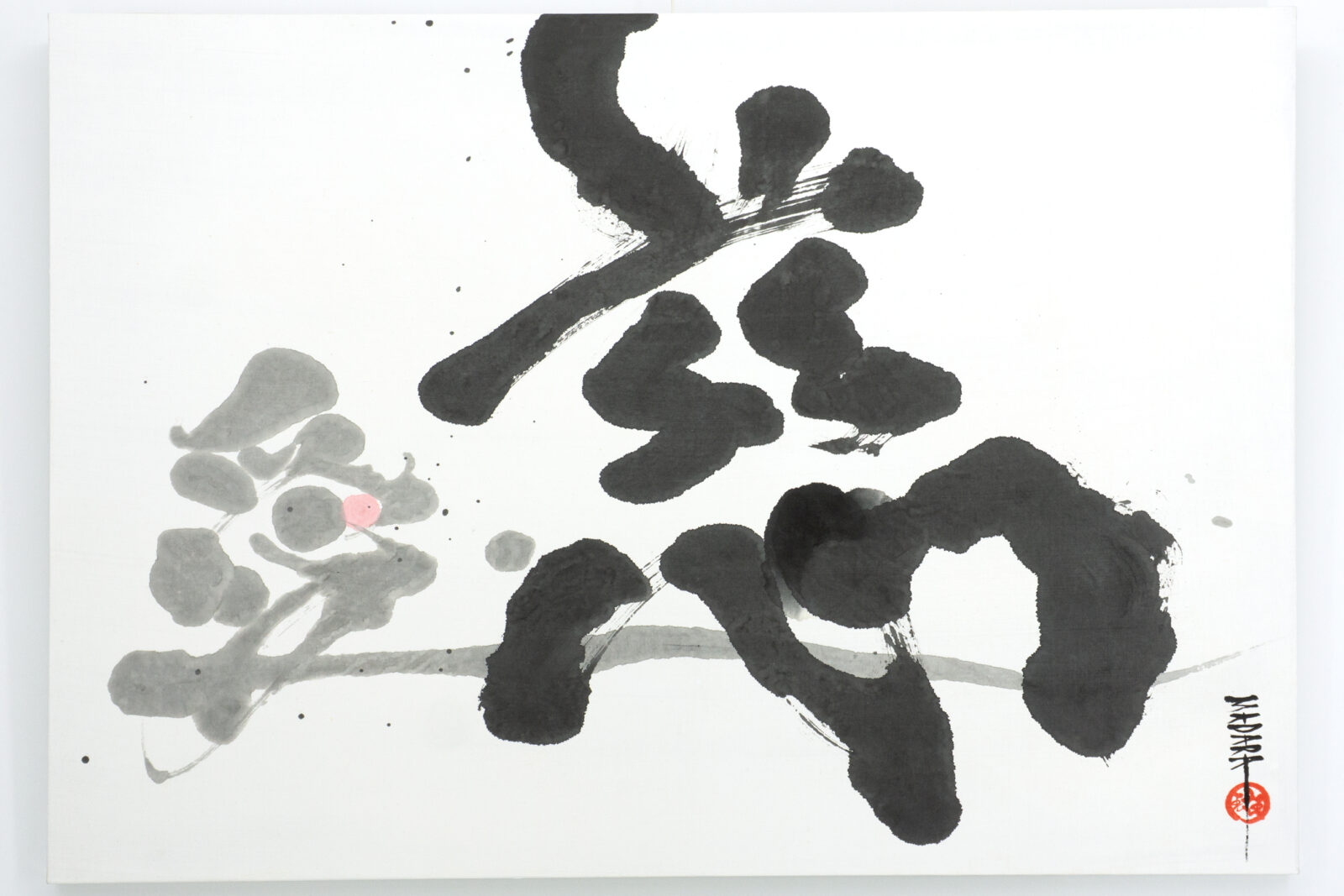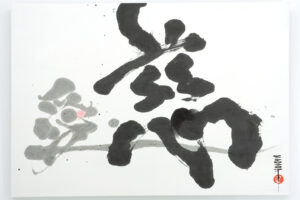Image of the work
You can enlarge the photo by tapping on it.
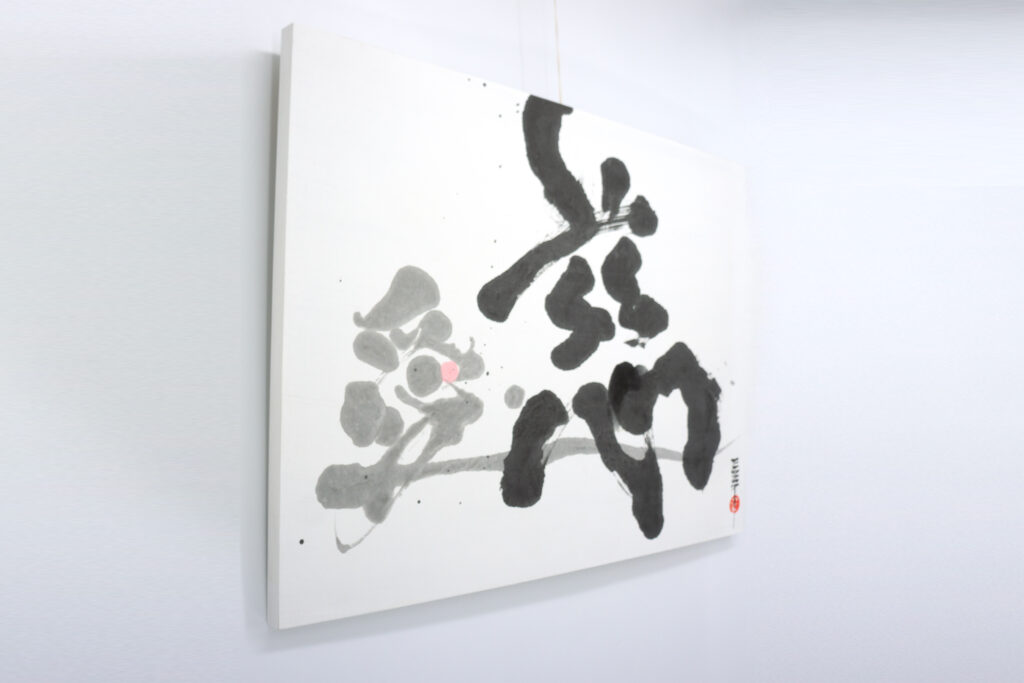
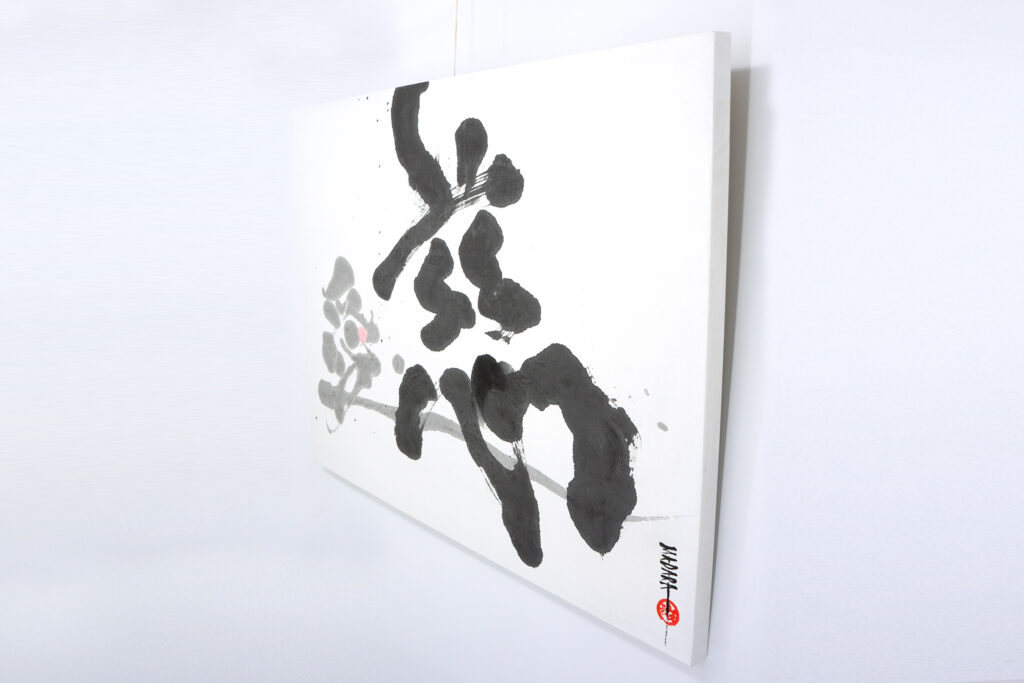
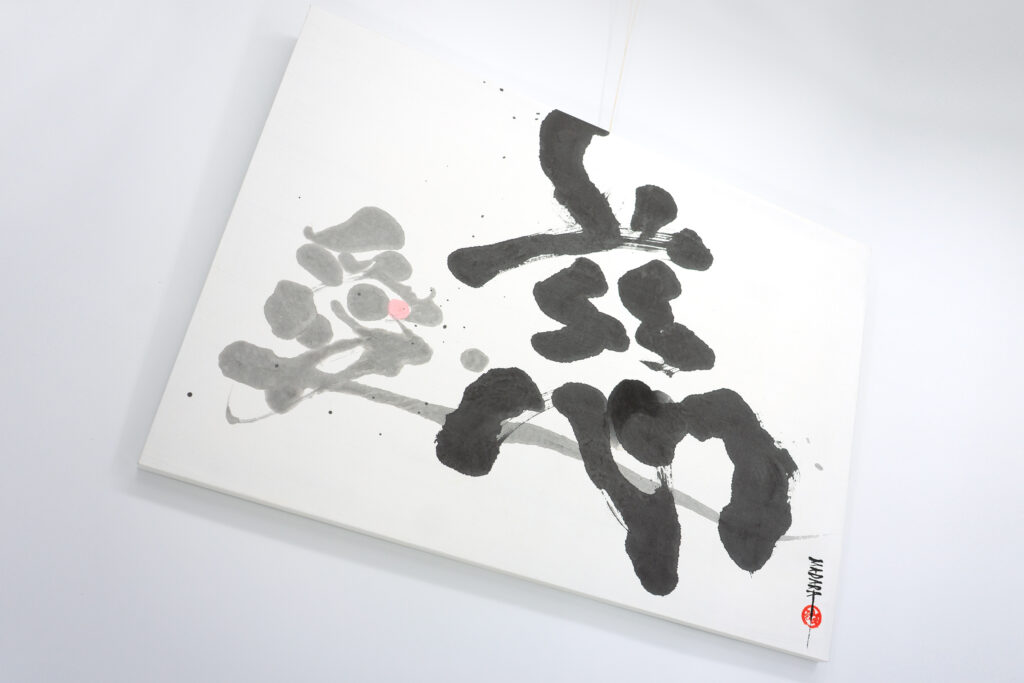
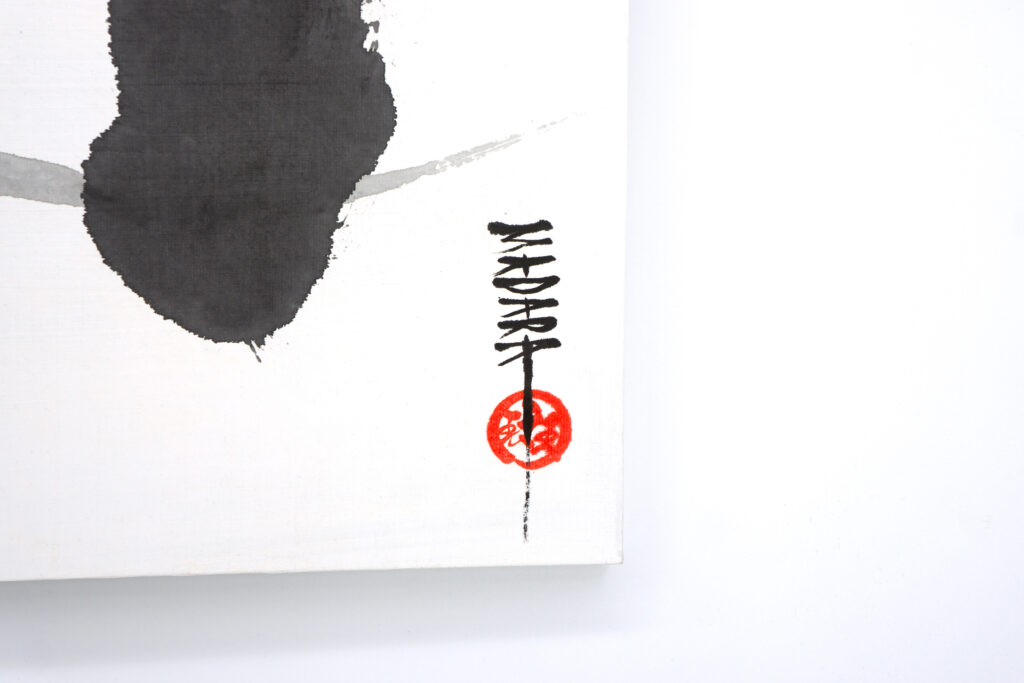
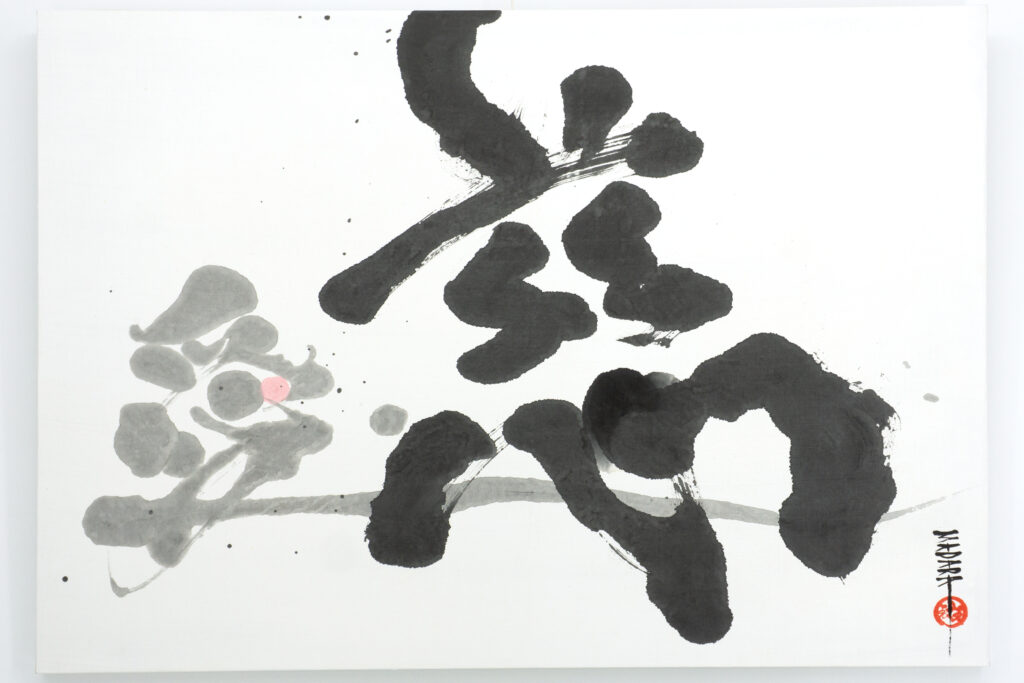
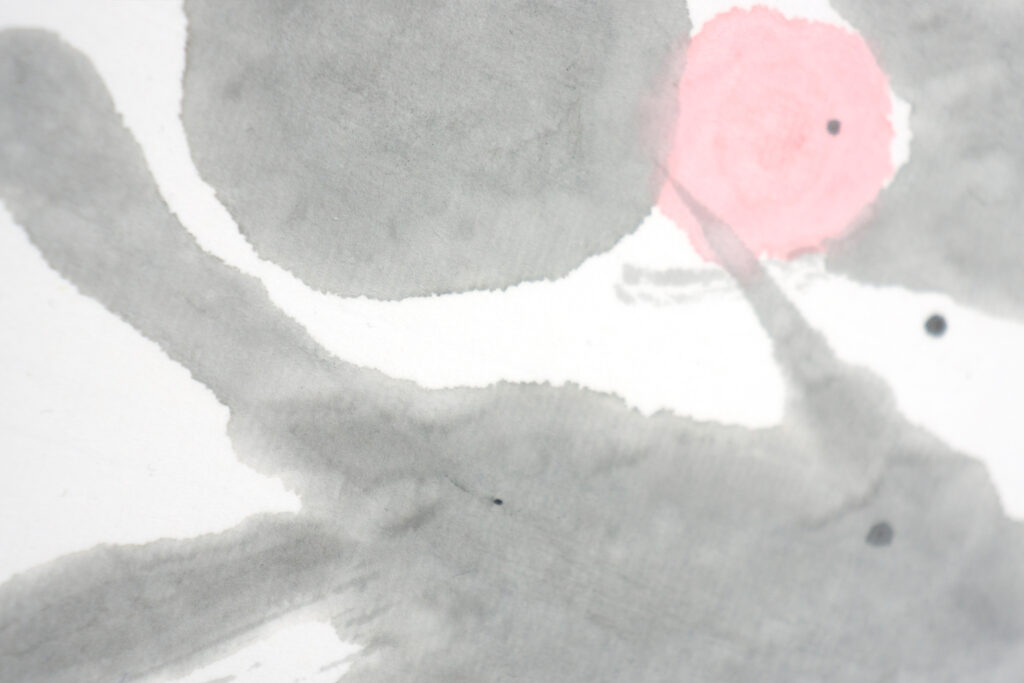
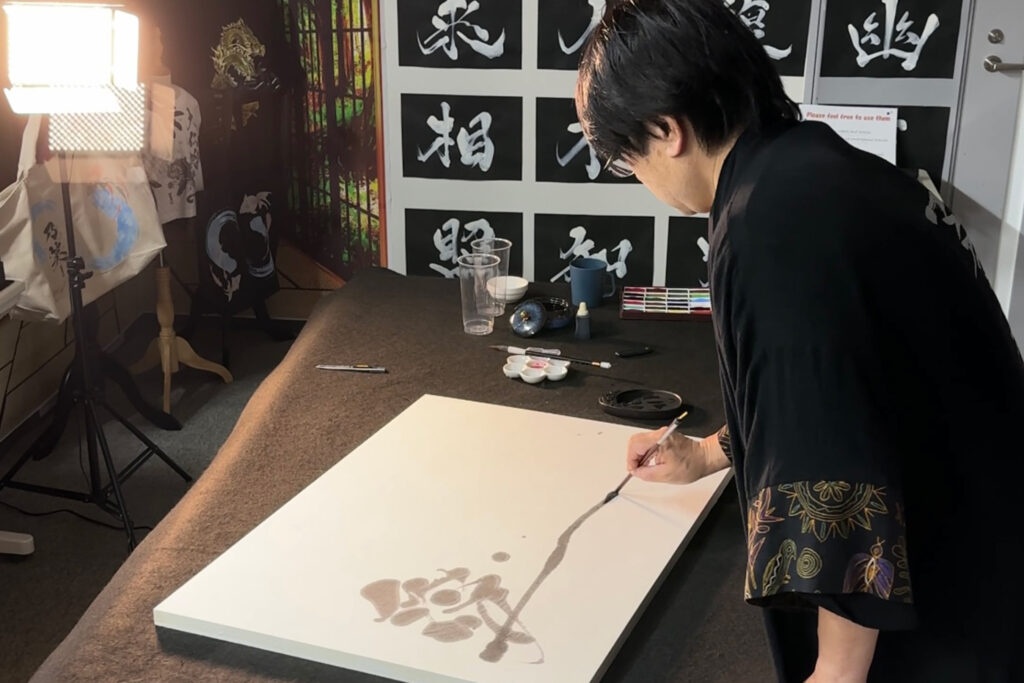
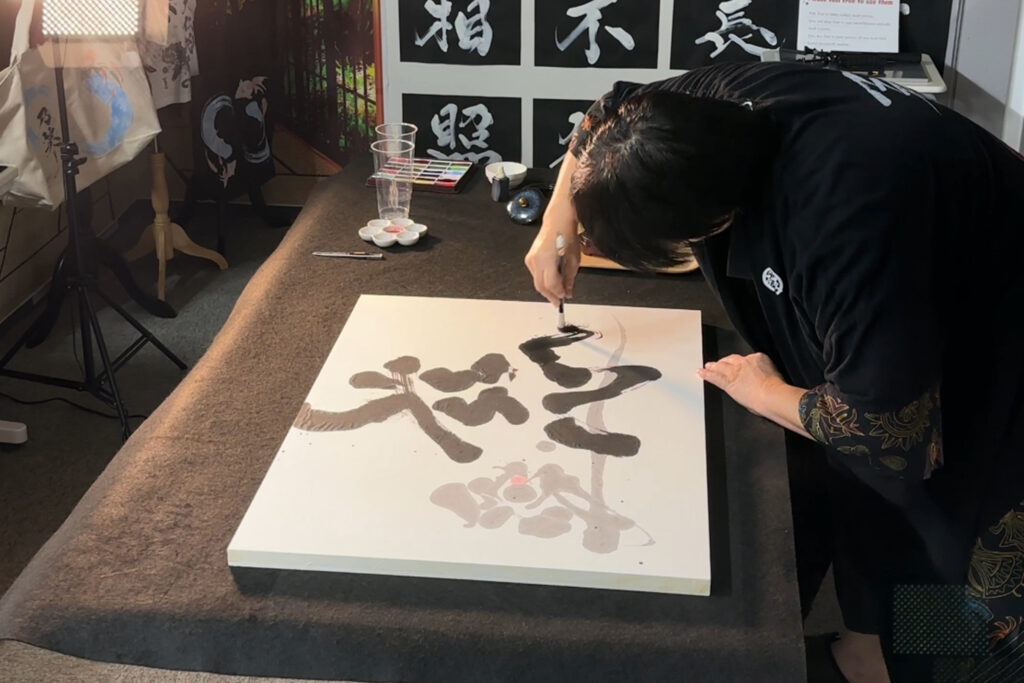
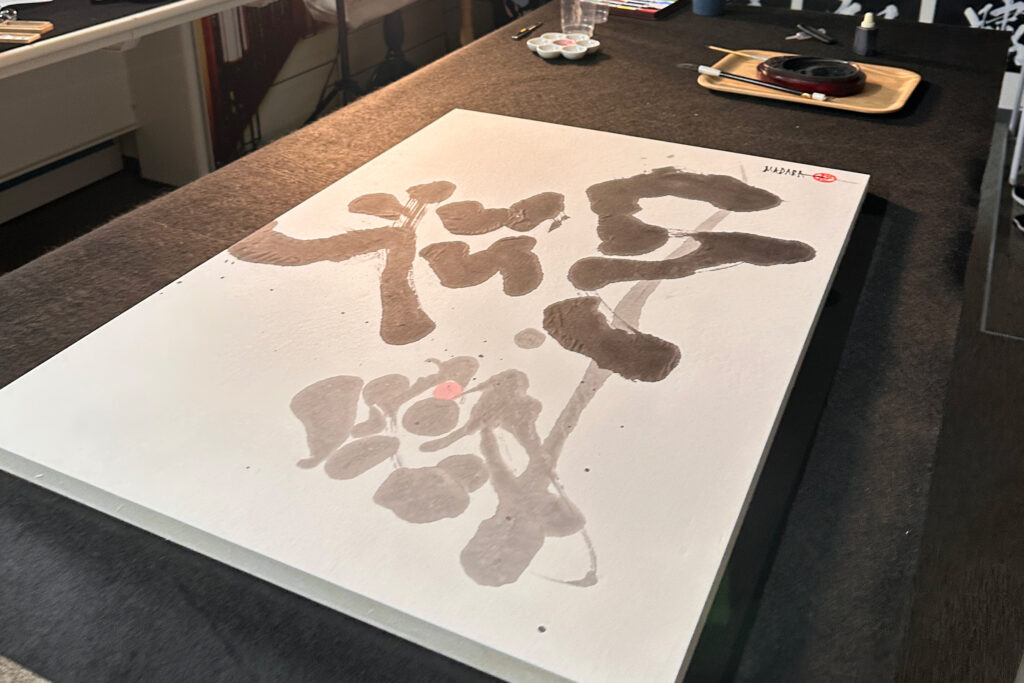
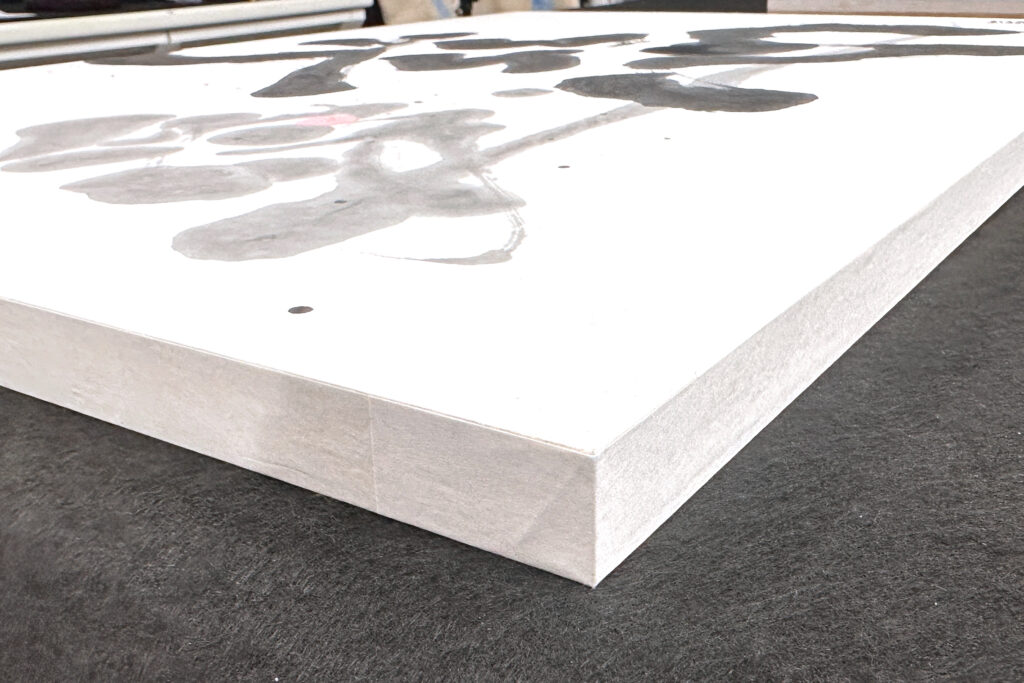


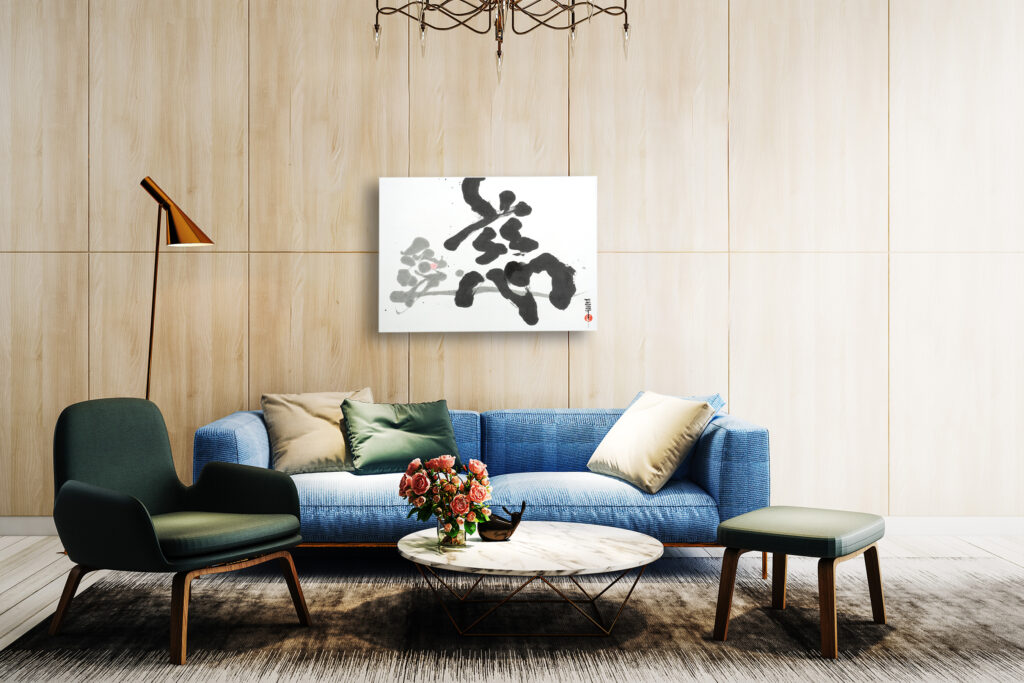
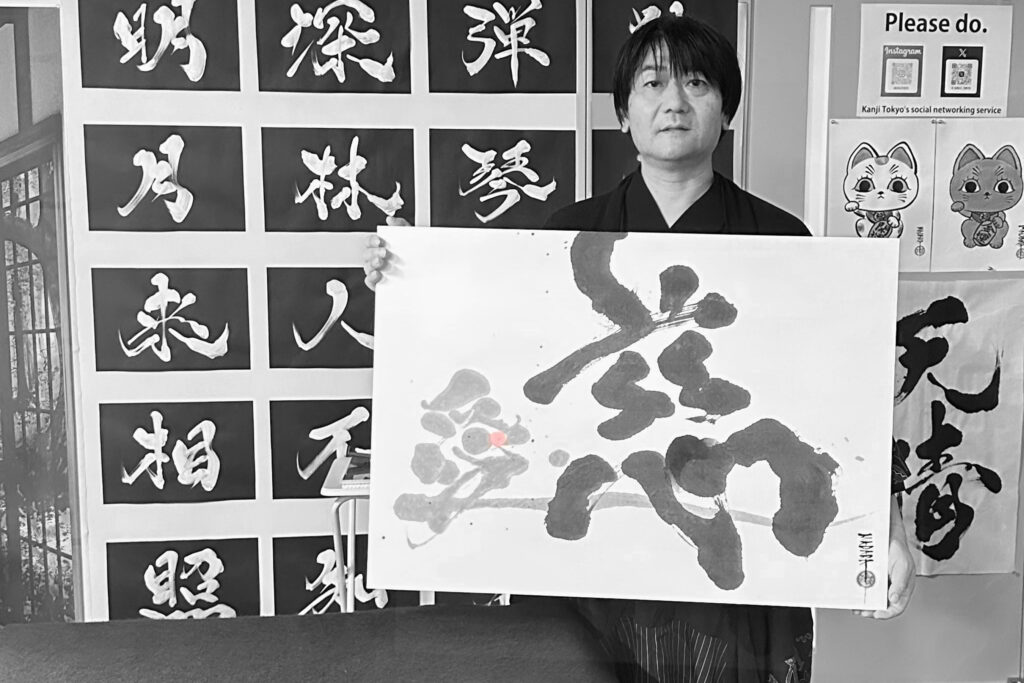
The worldview of the work
『On the banks of wide and deep love』
By MADARA
The word “love” is vast, deep, and at times, beautifully ambiguous.
When I began creating this work, “At the Shore of Compassion,” I felt strongly that love could never be confined to a single definition or form.
When one person thinks of another, there is both joy and sorrow.
Sometimes, love takes the form of a lie told to protect someone; sometimes, it is a love that asks for nothing in return.
Each of these may be incomplete, yet within them dwells a fragment of true, genuine love.
What I wished most to express was that single, genuine spark of love hidden within the chaos of emotions.
That is represented here as the small red dot within the painting.
Amid a world of gray and black ink, that one red mark shines quietly — a symbol of the essential love that endures even in the midst of deception, suffering, or impermanence.
It is not a flame of passion, but a quiet warmth — a drop of tenderness that embraces and heals.
The character “慈 (ji)”—meaning compassion or mercy—holds a deep personal meaning for me.
To me, it represents “the tenderness within love.”
True kindness is not merely soft or gentle; it is also the strength to accept another’s pain as your own.
“慈” embodies a heart that receives pain without rejection.
And “hotori” (the shore) represents the place where that heart quietly resides —
a gentle presence that stands beside another, like wind or light itself.
With that image in mind, I took up my brush.
When creating this work, I did not begin with a fixed composition.
I placed the brush on the washi paper, listened to the sound of the ink spreading, and allowed the natural flow of the ink to guide my hand.
That process felt like a journey — one of chasing love itself.
Lines that refused to obey, unexpected shapes, unpredictable blurs and stains —
to embrace all of these, rather than to resist them, became the essence of the work.
For me, calligraphy is not merely the expression of words —
it is the breath of the heart.
In the moment when a line is drawn, the rhythm of the soul appears; breath takes shape.
In each subtle tremor of the brush, the traces of human imperfection and sincerity emerge.
To me, to accept the smudge, the blur, and the imperfection — that too is part of a life.
That is where my art, my shodo, truly exists.
The shades of black, the flow of ink, and the open spaces (ma) between them — all are symbols of silence.
Within that silence lies the stillness of the human heart, the unspoken emotions that words cannot contain.
The small red dot added there is, for me, both a prayer and a truth — a symbol of compassion that reaches beyond the self,
a wish that extends not only toward others, but toward the world itself.
Though all forms of love in this world may be transient,
within that transience there exists a certain warmth — a pulse that continues quietly.
It is felt in the scent of wind, in the sound of a familiar voice, in the fading light of the setting sun.
Those fleeting moments — those tiny experiences of awareness and connection — are what inspire my art.
Often, inspiration finds me through words, sounds, or the stillness of nature.
The rustling of trees in the wind, the distant echo of waves,
and the space that stretches between myself and the vastness of the world —
in those moments, I feel the enormity of existence, and the beauty of being alive within it.
And when I encounter human kindness — a small, unspoken act of care — my heart trembles, and creation begins.
“At the Shore of Compassion” was born from such a fleeting, luminous moment.
Through this work, I hope to convey both the diversity of love and the truth of compassion.
It is not a glamorous or grand form of love, but a quiet love that breathes within ordinary days —
the kind that continues even in pain and uncertainty.
It is the heart that still chooses to care.
“At the Shore of Compassion” is a place where such a heart can rest,
a quiet space beside one’s own emotions.
If those who see this work can rediscover within themselves a sense of tenderness or warmth,
then, and only then, will this piece be complete.
For me, calligraphy is the expression of both prayer and love.
It is like writing a letter to someone unseen,
and sometimes, it becomes a way to heal myself as well.
“At the Shore of Compassion” is the embodiment of that feeling —
a condensation of every quiet act of love I have ever known.
If you can sense your own inner warmth within the flow of the ink,
then my work has reached its destination.
— MADARA
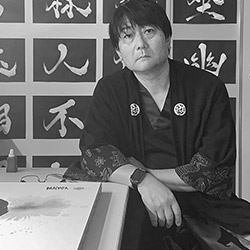
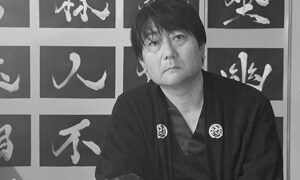
Behind the Scenes
Behind the Creation of “On the banks of wide and deep love (Itsukushimi no Hotori)”
The inspiration for this work came to me after watching Chainsaw Man: The Reze Arc. It is a story that portrays a love both beautiful and fleeting—an affection born between two souls who were never meant to be together. Reze, torn between her duty and her emotions, finds herself truly falling for Denji, even as she knows that her mission forbids such feelings. She dreams of escaping with him, but that dream dissolves into tragedy.
What struck me most deeply was not the violence or despair, but the single, pure spark of genuine love that burned amid the chaos—a love that could not be fulfilled, yet was undeniably real. That small, truthful fragment of emotion became the core of this calligraphic work.
In creating “At the Shore of Mercy,” I wished to express the many layers of love: compassion, tenderness, sacrifice, and even the quiet sorrow of caring for another. The character 「慈」(mercy) embraces all these facets—it is both gentle and strong, like the love that persists even when unreturned.
During the process of writing, I envisioned the faint red mark within the composition as that single, unwavering point of true love—the same pure light that flickered in Reze’s heart. Through the movement of the brush, I sought to capture not only beauty but also the fragility and nobility of that emotion.
For me, this work is not merely a depiction of affection, but a meditation on what it means to love selflessly—to cherish another even when the world forbids it. It is a prayer, written in ink, for all the unspoken loves that still shine quietly within us.
Kanji meaning
What does the kanji character “慈(ji or itsukusimi)” mean?
- “慈(Ji)” is a kanji character that means “cherishment,” “kindness,” “compassion,” and “deep love.”
- At its core, it represents “the selfless love that a mother has for her child” and “the warmth of a heart that cannot ignore those who are suffering.”
- “慈悲(Ji-hi)” is a very important word in Buddhism, and the “慈(ji)” in it refers to “love that brings comfort to others.” In other words, “慈(ji)” is particularly “love that cares for, embraces, and heals others.”
What does the kanji character “愛(a-i)love” mean?
- Fundamental meaning
A heart that cherishes and cares for people and things, and wishes to protect and nurture them. - Range of emotions
It broadly encompasses not only romantic and familial love, but also 友情(yu-jyo) friendship, 慈愛 (ji-ai) compassion, self-love, love of nature and art, and other warm feelings that respect others and do not expect anything in return. - Verb nuance
In ancient Japanese, the nuances of “cherish,” “cherish,” and “love” were strong, and it had a more active and protective aspect than it does today.
Work details
| item | Content |
|---|---|
| The basis of the work | Wood Campus |
| Material | wood, Japanese paper |
| Size | A1 33.11in(841mm) × 23.39in(594mm)×0.98in(25mm) |
| Materials used | India ink, Gansai (Japanese traditional watercolor) |
| Finishing the work | Japanese calligraphy paper is pasted on a wooden canvas and finished with ink. The red transfer parts are made with vermilion paint. |
| Regarding domestic and international shipping | ・International shipping available: Ships via FedEx if no designated shipping company is specified. ・Domestic shipping in Japan: Ships via Yamato Transport if no designated shipping company is specified. |
| Packaging at time of shipment | We can also accommodate requests for packaging such as simple packaging and heavy-duty packaging, so please contact us for details. |
| Shipping | Decisions will be made in consultation with the buyer, such as using transportation suitable for art works and taking out insurance. |
| Compensation for works | The artwork will be delivered in the same condition as when it was sold. If you would like to purchase art insurance, we are happy to discuss this. |
| Payment Method | The payment amount is the artwork price plus shipping. Payment can be made by credit card. |

